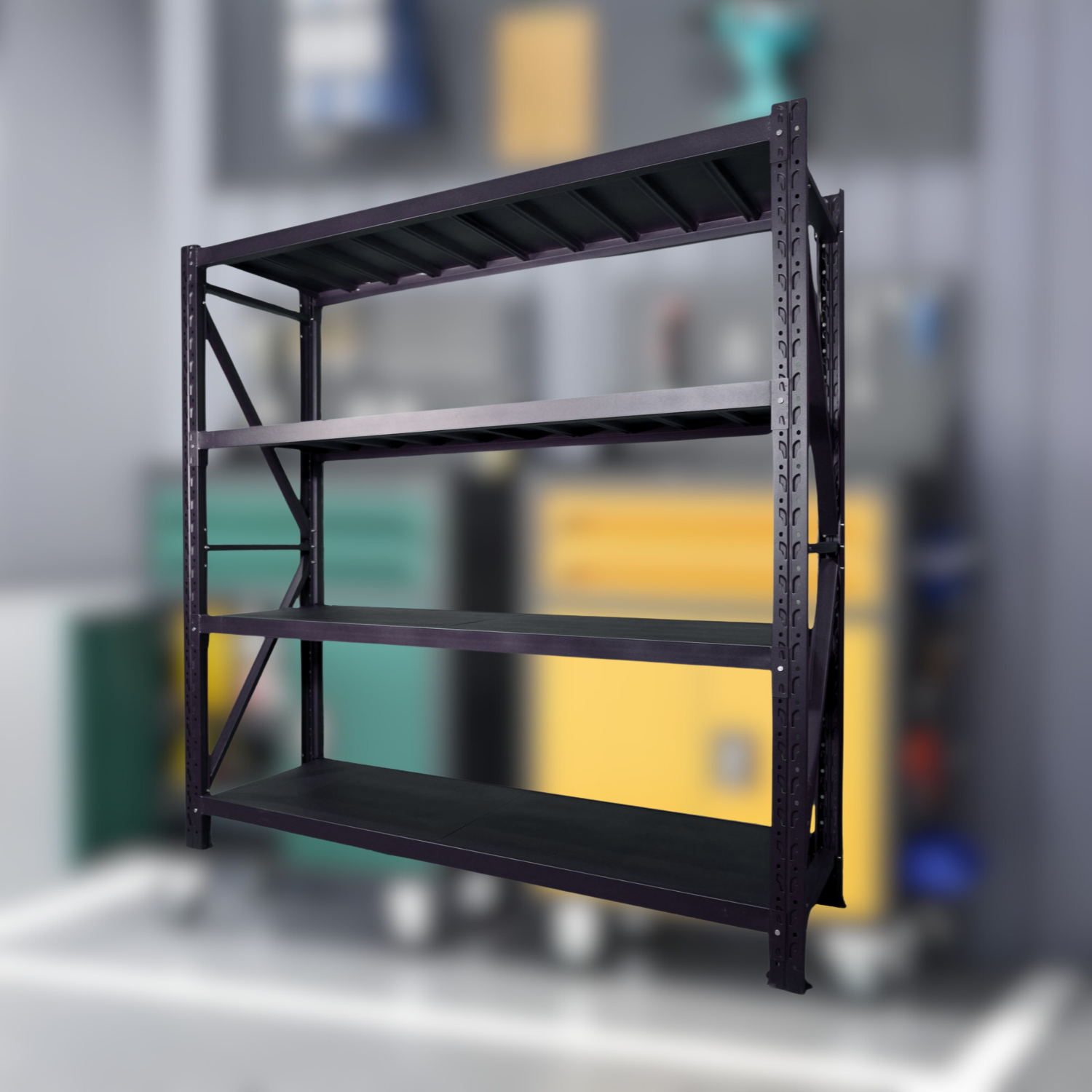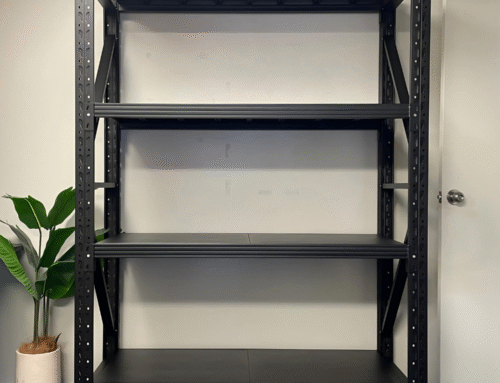Heavy duty shelving is the long-term choice for homes and businesses in Australia because it stays solid, keeps things tidy, and handles daily use. This article aims to provide you with a guide on how to choose the right heavy duty shelving for your home and business, starting from what to consider, how to set it up, and how to keep it in good shape, so you buy once and use it for years.
Why Heavy Duty Shelving Matters
Good shelves do more than just hold stuff. They make your space easier to use, safer to move around, and quicker to keep organized. Solid frames don’t shake when you pull a box forward. Levels don’t sag under common tools, paint, or car parts. You can find things faster and stop putting piles on the floor.
Weak shelving has hidden costs. You work around it: heavy items stay on the ground, boxes get stacked too high, and you waste time shifting things to reach what you need. Strong shelving stops this kind of issue where heavier items sit low, and daily items sit higher. You also reduce risks. Most of all, sturdy shelves protect your gear: fewer dented tins, crushed boxes, or scuffed tools.
Choosing the Right Heavy Duty Shelving
1) Pick materials that match the room
Powder-coated metal is the all-rounder for indoor spaces: clean look, wipes down easily. For damp areas or where floors get washed, choose finishes made to resist moisture so you won’t be chasing rust. Wire shelves help with airflow and easy cleaning which is useful for food, cleaning gear, or cooler rooms. Add pegboards and hooks for small items so nothing slips through. For bottles or tins, a flat surface keeps them steady.
2) Measure the space properly
Measure wall to wall, wall to door, and floor to ceiling. Check depth so doors, cars, and cupboards can still be able to open and people can walk past. Plan the most-used levels between hip and shoulder height, heavy items stay down low, where lifting is easier. Leave enough room between levels to slide a box out without scraping your knuckles. Remember to add a little extra if you wear gloves. If you use trolleys or a pallet jack, tape out the planned aisle and do a test run. A few extra centimeters can turn a tight squeeze into an easy pass.
3) Make it adjustable
Storage changes like new hobbies, new tools, seasonal stock. Choose shelves that let you move levels without special tools. Check that matching parts are easy to buy later, including extra shelves, beams, wall brackets, label holders, and small parts holders. If you will need to line up several bays, pick a series that connects neatly so you don’t waste space with awkward gaps.
4) Keep safety front and centre
Simple wall brackets or floor anchors are enough in most homes and small shops. Keep heavy items on the bottom. Spread the weight across each level and avoid big overhangs. Stick clear labels on every shelf so everyone knows the safe limit. If others use the space, share the basics that heavy low, light high, don’t stack too tall, and never climb on the racks. Store a step stool nearby for higher levels.
Installation and Setup Tips
Lay the parts out and check you have everything. Build on a clear patch so you can square the frame and see that it sits flat. If the floor isn’t perfect, use small shims under the feet so uprights stand straight, because this makes a big difference to how solid the unit feels. Add levels from the bottom up so the frame grows stable as you build. After loading the first time, give the unit a gentle shake to see if anything moves more than a little, re-tighten, adjust shims, or add a bracket.
Plan labels before you fill the shelves. Level-by-level stickers help you and anyone else return items to the same spot. If you store for multiple projects, add bin labels or color tags. Leave small gaps for cables.
How to Maintain Heavy Duty Shelving
With simple care, good shelves often last ten to fifteen years or more. The keys are clean surfaces, straight frames and place heavy items low. Small behaviours like wiping spills, tightening a bolt, and replacing a label can add years of trouble-free use.
Final Thoughts
Choose shelves for how you will actually use them, thinking about what you will store, where they will sit, how you move around them, and how you will keep them safe. Pick a solid system with clear labels and matching accessories, install it carefully, and give it a quick check. Your heavy duty shelving will stay sturdy, safe, and easy to live with, whether it is at home, in a shop, or in a small warehouse. You will spend less time moving boxes, more time getting things done, and you don’t need to worry about shopping next time because the first set gave up.



Leave A Comment